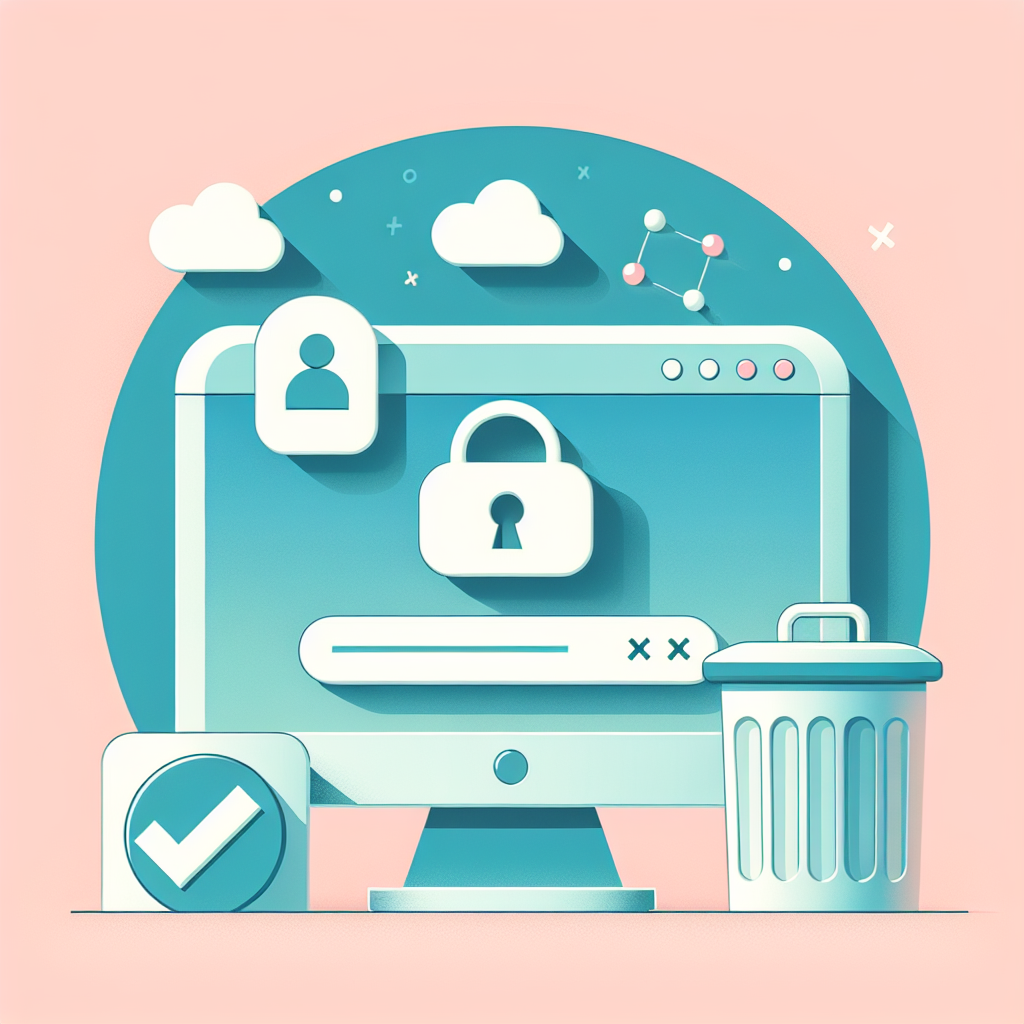Understanding PayPal and Account Deletion
PayPal has become one of the most popular online payment platforms, serving millions of users worldwide. However, there may come a time when you decide to part ways with the service. Whether you’re concerned about security, switching to a different payment method, or simply no longer need your account, it’s essential to know how to delete your PayPal account securely.
In this comprehensive guide, we’ll walk you through the process of deleting your PayPal account, discuss important considerations before taking this step, and provide answers to frequently asked questions. We’ll also explore alternatives and security measures to ensure your financial information remains protected throughout the process.
Before You Delete: Important Considerations
Before you proceed with deleting your PayPal account, there are several crucial factors to consider:
1. Outstanding Balances and Transactions
Ensure that you have no pending transactions or outstanding balances in your account. This includes:
- Unclaimed payments
- Unresolved disputes or claims
- Recurring payments or subscriptions
- Money owed to PayPal
2. Linked Bank Accounts and Cards
Review and remove any linked bank accounts, credit cards, or debit cards from your PayPal account. This step helps prevent any potential issues with future transactions or account access.
3. Transaction History and Records
Download your transaction history and any important records before deleting your account. Once your account is closed, you won’t have access to this information through PayPal.
4. Business Accounts and Integrations
If you use PayPal for business purposes, consider the impact of account deletion on your operations. This may include:
- Integration with e-commerce platforms
- Recurring customer payments
- Employee payroll services
5. Legal and Tax Implications
Consult with a legal or tax professional if you have concerns about the implications of closing your PayPal account, especially if you use it for business transactions.
Step-by-Step Guide to Deleting Your PayPal Account
Now that you’ve considered the important factors, let’s walk through the process of deleting your PayPal account:
Step 1: Log in to Your PayPal Account
Visit the official PayPal website and log in to your account using your credentials.
Step 2: Access Account Settings
Click on the gear icon or “Settings” in the top-right corner of the page to access your account settings.
Step 3: Navigate to “Close Your Account”
Under the “Account” tab, scroll down to find the “Close your account” option. Click on this link to proceed.
Step 4: Review Account Information
PayPal will display important information about closing your account. Read this carefully to understand the consequences of account deletion.
Step 5: Confirm Account Closure
If you’re sure you want to proceed, click on the “Close Account” button. You may be asked to confirm your decision once more.
Step 6: Provide Reason for Closure (Optional)
PayPal may ask for feedback on why you’re closing your account. This step is optional but can help the company improve its services.
Step 7: Account Deletion Confirmation
Once you’ve completed the process, PayPal will confirm that your account has been scheduled for closure. You should receive an email confirmation as well.
Post-Deletion Security Measures
After deleting your PayPal account, it’s crucial to take additional steps to ensure your financial security:
1. Monitor Your Bank Statements
Regularly check your bank and credit card statements for any unauthorized transactions related to PayPal.
2. Update Payment Information
If you used PayPal for recurring payments or subscriptions, update your payment information with those services to avoid interruptions.
3. Inform Contacts
Let your frequent PayPal contacts know that you’ve closed your account to prevent any confusion or potential issues with future transactions.
4. Secure Your Devices
Ensure that any devices you used to access PayPal are secure and free from malware. Consider changing passwords for other financial accounts as an extra precaution.
Alternatives to Deleting Your PayPal Account
If you’re hesitant about completely deleting your PayPal account, consider these alternatives:
1. Limit Account Activity
Instead of deleting your account, you can:
- Remove linked bank accounts and cards
- Cancel recurring payments and subscriptions
- Limit account permissions
2. Use PayPal’s Security Features
Take advantage of PayPal’s security features to enhance your account protection:
- Enable two-factor authentication
- Set up account alerts
- Regularly update your password
3. Temporarily Deactivate Your Account
Some users may prefer to temporarily deactivate their account rather than permanently deleting it. Contact PayPal customer support to explore this option.
Understanding PayPal’s Account Retention Policy
It’s important to note that even after you’ve requested account deletion, PayPal may retain some of your information for a certain period. This is due to legal and regulatory requirements, as well as fraud prevention measures.
Data Retention Period
PayPal typically retains account information for:
- Active accounts: As long as the account remains active
- Closed accounts: Up to 10 years after closure
Types of Retained Information
The information PayPal may retain includes:
- Transaction history
- Account holder details
- Communication records
- Dispute and claim information
Protecting Your Financial Information Online
Whether you choose to delete your PayPal account or continue using it, it’s crucial to prioritize the security of your financial information online. Here are some best practices to follow:
1. Use Strong, Unique Passwords
Create strong, unique passwords for all your financial accounts, including PayPal. Consider using a password manager to generate and store complex passwords securely.
2. Enable Two-Factor Authentication
Whenever possible, enable two-factor authentication (2FA) for your online accounts. This adds an extra layer of security beyond just a password.
3. Regularly Update Software and Apps
Keep your devices, operating systems, and apps up to date with the latest security patches and updates.
4. Be Cautious of Phishing Attempts
Be wary of unsolicited emails, texts, or calls asking for your financial information. Always verify the source before providing sensitive data.
5. Use Secure Networks
Avoid accessing financial accounts on public Wi-Fi networks. If necessary, use a Virtual Private Network (VPN) for added security.
6. Monitor Your Accounts Regularly
Regularly review your financial statements and transaction history to catch any suspicious activity early.
The Future of Digital Payments
As the digital payment landscape continues to evolve, it’s worth considering the broader context of online financial services:
Emerging Payment Technologies
New payment technologies are constantly emerging, including:
- Cryptocurrency-based payments
- Biometric authentication methods
- Contactless payment systems
Increased Regulation and Security Measures
Governments and financial institutions are implementing stricter regulations and security measures to protect consumers in the digital payment space.
Integration of Artificial Intelligence
AI and machine learning are being increasingly used to detect fraud, improve user experience, and personalize financial services.
Legal Considerations When Closing Financial Accounts
When closing any financial account, including PayPal, it’s important to be aware of potential legal implications:
Tax Reporting Obligations
Ensure that you have all necessary records for tax reporting purposes before closing your account, especially if you’ve used PayPal for business transactions.
Contractual Obligations
Review any agreements or contracts associated with your PayPal account to ensure you’re not breaching any terms by closing it.
Dispute Resolution
Be aware that closing your account may affect your ability to resolve any ongoing or future disputes related to past transactions.
The Impact of Account Deletion on Digital Identity
In today’s interconnected digital world, your online accounts form a part of your digital identity. Deleting a significant account like PayPal can have broader implications:
Digital Footprint Reduction
Deleting your PayPal account can help reduce your overall digital footprint, which may be desirable for privacy reasons.
Loss of Transaction History
Your PayPal transaction history can serve as a record of your online purchasing behavior. Deleting your account means losing access to this historical data.
Impact on Other Services
Some websites and services use PayPal as a verification method. Deleting your account may affect your ability to use or access these services.
Conclusion
Deleting your PayPal account is a significant decision that requires careful consideration and planning. By following the steps outlined in this guide and taking necessary precautions, you can ensure a secure and smooth account closure process. Remember to weigh the alternatives, understand the implications, and prioritize the security of your financial information throughout the process.
Whether you choose to delete your PayPal account or explore other options, staying informed about digital payment security and evolving financial technologies will help you make the best decisions for your online financial management.
Frequently Asked Questions (FAQs)
Q1: Can I reopen my PayPal account after deleting it?
A: Once you’ve deleted your PayPal account, it cannot be reopened. You would need to create a new account if you wish to use PayPal services again in the future.
Q2: How long does it take for PayPal to delete my account?
A: The account deletion process typically begins immediately after you confirm your decision. However, it may take several days for the deletion to be fully processed in PayPal’s systems.
Q3: Will deleting my PayPal account affect my credit score?
A: Deleting your PayPal account should not directly impact your credit score. However, if you have any outstanding balances or unresolved issues, these could potentially affect your credit if left unaddressed.
Q4: Can I delete my PayPal account if I have a negative balance?
A: No, you cannot delete your PayPal account if you have a negative balance. You must first resolve any outstanding balances before closing your account.
Q5: What happens to my PayPal Credit account if I delete my PayPal account?
A: If you have a PayPal Credit account, you’ll need to contact PayPal Credit customer service separately to close that account. Deleting your main PayPal account does not automatically close your PayPal Credit account.
Q6: Can I delete my PayPal account from the mobile app?
A: As of now, you cannot delete your PayPal account directly through the mobile app. You’ll need to log in to your account through a web browser to access the account closure option.
Q7: Will I still receive emails from PayPal after deleting my account?
A: After deleting your account, you should stop receiving regular PayPal communications. However, you may receive a final confirmation email about your account closure.
Q8: What should I do if I can’t access my PayPal account to delete it?
A: If you’re unable to access your account, contact PayPal customer support. They can assist you with account recovery or, if necessary, guide you through the process of closing an inaccessible account.
Q9: Does deleting my PayPal account cancel all my automatic payments?
A: Deleting your account will stop future automatic payments set up through PayPal. However, it’s best to manually cancel any recurring payments before closing your account to ensure a smooth transition.
Q10: Can I delete my PayPal account if I have an unresolved dispute?
A: It’s generally recommended to resolve any open disputes before closing your account. Unresolved issues may complicate the account closure process or leave you vulnerable to potential financial liabilities.

